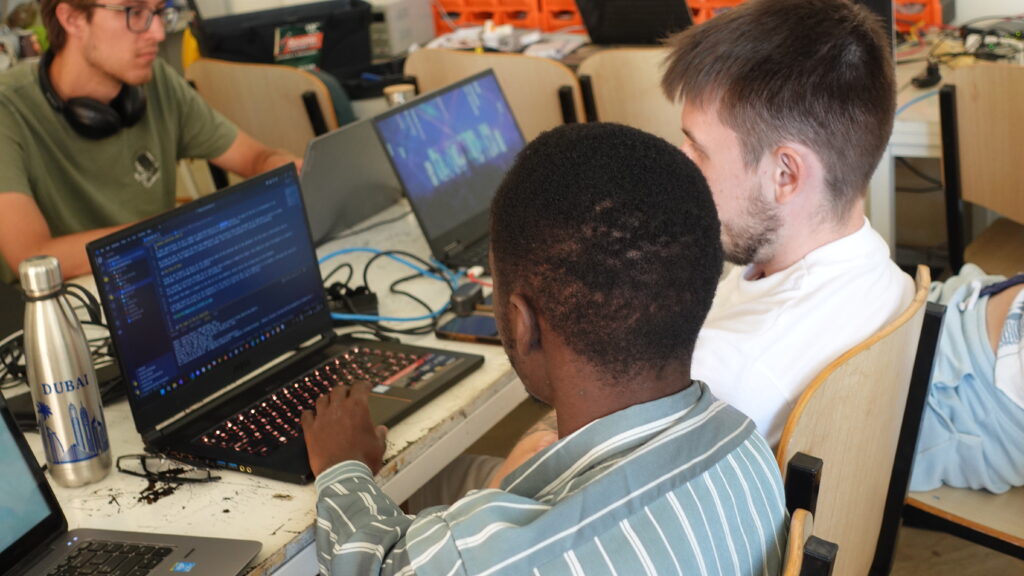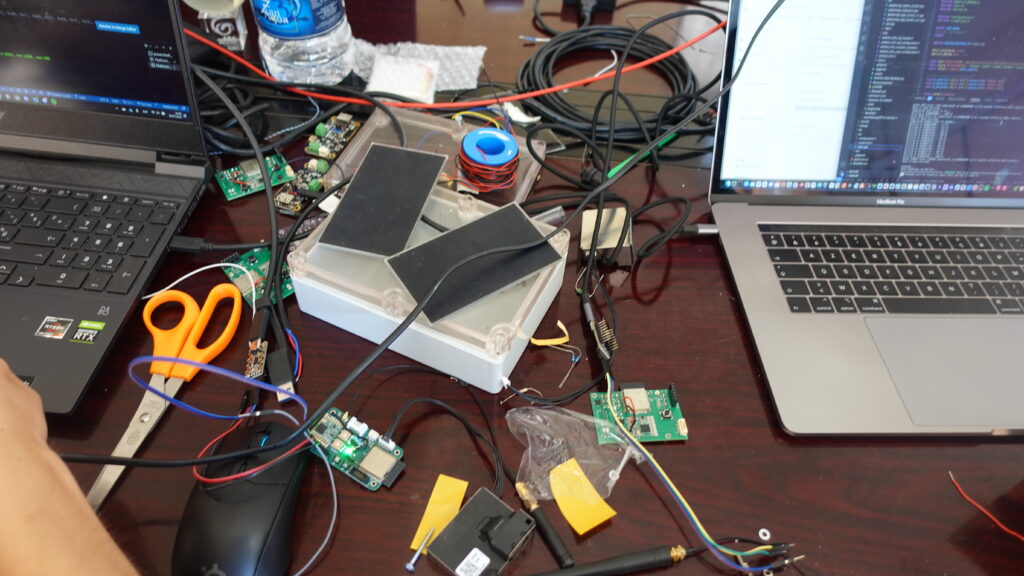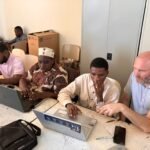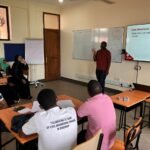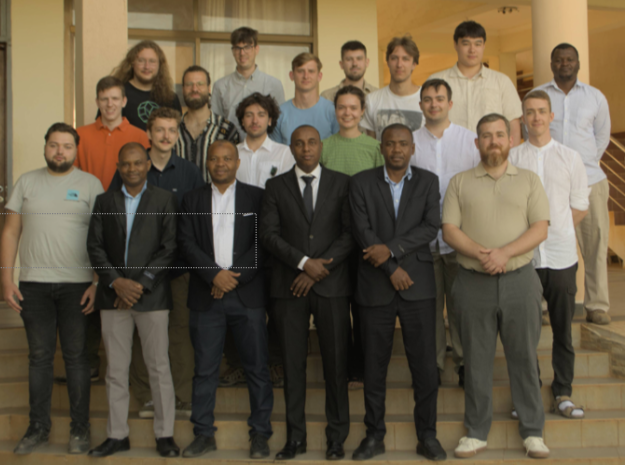
A group of AP University of Applied Sciences and Arts students recently went on an Erasmus+ trip to Zanzibar, where they developed and implemented IoT (Internet of Things) solutions.
- Kelvin Bogaerts
- Nicolai De Groot
- Laurens De Smedt
- Joey de Waal
- Gehre Warre
- Hakim Ghanoudi
- Laurence Leysen
- Kobe Nevelsteen
- Lorik Qerkezi
- Yenthe Van den Eynden
- Eline Van Zeir
- Stijn Voeten
- Jesse Zaenen
This initiative was part of the APAQ&E project, focused on monitoring air quality and environmental factors to empower local organizations and governments with data-driven insights.
The project: APAQ&E
The APAQ&E project—standing for Air Quality & Environment—has the goal of addressing environmental challenges in Zanzibar by leveraging technology. The students with eight students specializing in cybersecurity, two in IoT, and others in AI, software development and IT & business, came together to create a comprehensive solution aimed at monitoring air quality and other environmental parameters. This data, once collected, would be made available on a user-friendly platform designed to aid local decision-makers in crafting policies that protect the environment and public health.
The sensor technology
One of the core components of the project was the development of sensors capable of measuring various environmental factors such as humidity, temperature, and levels of harmful pollutants like NOx and VOCs. The students conducted extensive market research, evaluating components from providers like SparkFun, Adafruit, and DFRobot to build an open-source sensor box. These sensors were designed not only to be accurate but also energy-efficient, with a theoretical battery life of 72 hours supported by solar charging capabilities.
Challenges
As with any ambitious project, the students faced significant hurdles. Early designs of the sensor board encountered issues with power supply and component integration, leading to critical adaptations. The team showed resilience and creativity, rewiring and reprogramming the boards to ensure they met the project’s demanding specifications. This included adding new functionalities like current sensing and adapting the software to handle these changes effectively.
Backend Infrastructure: ensuring data Integrity and accessibility
Behind the scenes, they implemented a backend infrastructure. This included data storage solutions using InfluxDB for time-series data and PostgreSQL for relational data, along with a robust API built with FastAPI. The API facilitated seamless data flow between sensors, storage systems, and the user interface, ensuring that real-time environmental data was readily available for analysis.
Frontend and User Interface
The frontend team created a dashboard that would allow local organizations in Zanzibar to easily access and interpret the environmental data collected by the sensors. This dashboard was designed with usability in mind, ensuring that even those with limited technical expertise could navigate the platform and make informed decisions based on the data provided.
Future
Looking ahead, the students plan to further refine their sensors and expand the scope of their monitoring capabilities. They also aim to integrate more advanced AI-driven anomaly detection systems to alert users of potential environmental hazards in real time.




